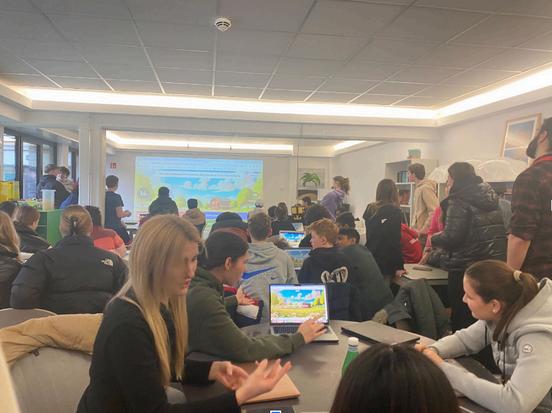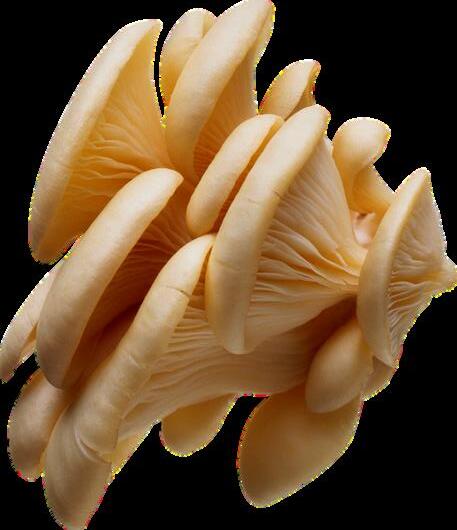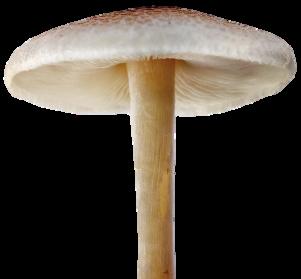
IS Ruhr Newsletter
The official newsletter of International School Ruhr Newest addition - Descriptive writing Exploring culture 03 07 FEATURES Exploring boidiversity! 09
THE _ ISSUE (Bio) Diversity
THE ISSUE: The Official Newsletter of International School Ruhr


Editorial Team
This newsletter is produced through the efforts of the IS Ruhr Media Arts class. Our new editor, Oliver is joining the team! “I am ready to be the editor and am excited to be working with the team!” - Oliver
Manager and vice Manager
Mia Mbalisike CNH
Writers
Bassila Assman
Mariia Kosenko
Marvin Printzen
Mia Mbalisike
Milan Zinflou
Oliver Jones-Katz
Yu Su Tsai
Giada Stockstill
Nina Haverkamp
Design and Editing , Nina Haverkamp
Sofia Bornato
In this issue, we explore diversity across the world: diversity in humans and culture, the environment, and other parts of the world. This issue has information that will interest anyone. From teachers to students, parents to friends.
Vol 4.1 Issue 1 2023

We learned the basic bicycle driving rules We did also drove on a rebuild of a real road with bicycles while following the rules.

At the field trip we first learned how to correctly turn to the right, we also learned the meaning of some traffic signs.
On the fieldtrip we learnedaboutthe traffic signs andrules,afterwards we usedour knowledge androde bike througha smalltrainingparkour.
What did you do at the fieldtrip?



What activity was your favorite and why?
I liked learning about the rules and signs, because it was fun and interesting.
We did do a lot of fun things but my Favorite activity was eating sweets while listing to the man while he was explaining the bicycle driving rules (also the general ones).
My favorite was when we could drive alone it felt like we were in real traffic only save and it was super fun, it was like a parkour.
Grade 4 Field Trip
At the field trip we learned about signs that are for cars, pedestrians and bikes. After we learned about priority and all kinds of signs we went outside to ride isome bikes.
My favorite activity was riding the bikes because we could go all around the place and fave fun.

We interviewed the grade 4 students on their field trip to Jugendverkersschule, and these were their responses to the questions in the speech bubbles.
I didn'tknow that the people on the right always drivefirst.
I did learn that the stop sign is the only sign with this shape so in the winter when its full of snow you can still know that its a stop sign.
What did you learn that was new?
I learned that we have to use hand signs whenever we want to go to the left or the right.
I learned about signs and many other things.
Wouldyourecommendthis experiencetoG4students nextyear?

I would recommend it tograde important to know about and it is also very fun.

Yes, definitely it was fun and we learned something.
Yesbecause in myopinion it is a fun/entertainingexperience were we were ableto learn alot ofinteresting things.

IthinkthatGrade 4students next year aregoing to like this experience because it's afun way to learn andimaybe it'sgoing to be sunny so thatis better.
Omega Session (Sixth Graders)
On February 20th, the sixth graders in the SY had an omega session about endangered species They provided relevant information about the blackfooted ferret and the green sea turtle and how human interaction has destroyed their environments and threatened their offspring. Along with that, they provided a Minecraft simulation of the habitats of the animals and how humans have disrupted them. Their presentation ended with a very fun kahoot! Overall, the sixth graders did very well on their omega session and entertained us all, while also keeping us informed on problems that affect animals globally.




All about Fungi
By Milan Zinflou

Fungi, the mystical life form that decomposes dead biomaterial for us, but also tastes excellent in our food. The life form that causes some really nasty infections, but also cured some of the worst bacterial diseases humanity has faced. So what is this mysterious group of organisms that are neither plant nor animal?
The most common fungi you might know are mushrooms, but the part of the mushroom you can see is actually just the fruiting body of the fungi, which is the part that spreads spores which are responsible for reproduction. The actual fungus itself is called mycelium and is a network of small fibers called hyphae. This mycelium can have vastly different sizes depending on the fungi; some fit in just one ant while others cover thousands of square meters of land. Since fungi have no stomachs, they need to digest their food outside of their body before they can eat it. To do this, the hyphae secrete enzymes which break down the organic material, in which the fungus lives, into small nutrients that the mycelium can absorb.


THE ISSUE - September 2023 Page 03
While you probably already know that mushrooms are fungi, there are two other types of fungi that you often encounter in your day to day: Molds and Yeasts. That's right, both the stuff we use to make bread rise, as well as the stuff that appears when it's expired, are fungi. Infact, fungi are all around us! If you have ever had Athletes foot, an infection where the skin around your toes starts peeling, that's caused by a fungus. Many antibiotics like penicillin, which we use to fight bacterial diseases, are also made from fungi.
So what is the role of fungi in nature? In forest ecosystems, fungi that are harmful to trees are actually very useful, as they keep the tree population under control and promote plant biodiversity. The dead wood from the trees that these fungi kill are important to another group of fungi that decompose dead material such as wood, leaves, and carcasses into nutrients and minerals. These decomposers form mushrooms as fruiting bodies, which are an important source of food for many of the animals living there, allowing the nutrients from the decomposed materials to go back into the ecosystem.


Sources: https://microbiologysociety.org/why-microbiology-matters/what-is-microbiology/fungi.html
https://www.britannica.com/science/fungus
https://www.usu.edu/herbarium/education/fun-facts-about-fungi/what-are-fungi
https://apps fs usda gov/r6 decaid/views/fungi html
pictures:
https://www.usu.edu/herbarium/images/fun-with-fungi/morels-iii.jpg https://cdn.britannica.com/26/726-050-29E9263C/Bracket-fungi-some-tree-trunks-diameterspecies jpg https://microbiologysociety org/static/derivatives/487x302 highestperformance /ad941663-b2974b09-b69bca78f0d0e73f.png
THE ISSUE - September 2023 Page 03
Great White Sharks and their vulnerability
Great White Sharks are by far the most famous of its species. They are represented in media all over the world, however not in the most positive light. Throughout the years, they have been deemed as dangerous beasts of the sea that prey on humans. This is not the case. They tend to stay out of our way as much as possible and only attack when irritated or disturbed.
Great Whites have often been considered a delicacy and common in expensive cuisine. This is simply wrong. One of the main reasons for the endangerment of this species is because they are eaten. 80 million sharks are killed every year by humans.

In conclusion, Great White Sharks are in danger, and it is our duty to them to stop eating them and falsely representing them in the media.


THE ISSUE - September 2023 Page 04
Vol 4 Issue 1 - The Harvest Issue 2023

World Wildlife Day
By Bassila Asmann
Every 3rd of March we celebrate United Nations World Wildlife Day to celebrate wild animals and animals. Each year, we acknowledge the special parts and commitments of natural life to individuals and the planet. The WWD2024 Theme is Connecting People and Planet: Exploring Digital Innovation in Wildlife Conservation.
December 2013, the United Nations General Assembly, declared March 3rd as United Nations World Wildlife Day. That day holds significance as the day that the Convention of International Trade in Endangered Species of Wild Fauna and Flora was signed in 1973. UN World Wildlife Day has presently ended up the worldwide yearly occasion committed to natural life






To get involved you can organize your own event or share commitment to wildlife on social media. This year's World Wildlife day focuses on digital innovation and emphasizes how digital conservation technologies and services can drive wildlife conservation, sustainable and legal wildlife trade, and human-wildlife coexistence.
To conclude, World Wildlife day focuses on celebrating wild animals and animals and it is a beautiful day to appreciate wildlife and nature.
THE ISSUE - September 2023 Page 05
Vol 4 Issue 1 - The Harvest Issue 2023
HAIR
Miak Mbalisike
Black History Month (BHM), is a month to honor the history and contributions of Black people to society. It originated in the USA and is still primarily celebrated there during February. Alternatively, there is also a Black History Month in the UK, celebrated in October. Despite being in Germany, that doesn’t mean we can’t still acknowledge and celebrate Black history and identity here.

One important factor of Black identity is Black hair. Historically, Black people’s hair has been discriminated against despite their incredible diversity and creativity with their natural hair. Many people consider their hair “unkempt” and do not see its beauty, which can heavily affect them.
They are made to feel ugly and lesser because their typically coily, afro hair is far from the beauty standard.
Take some time to look at some typical Black hairstyles and ask yourself, do you find them beautiful?


THE ISSUE - September 2023 Page 07
Vol 4 Issue 1 - The Harvest Issue 2024
Benefits of being outside and active
No matter what you are, being outside and active is super important. There are tons of benefits that come with being active Being active provides the body with what it needs, for example physical health, mental health and more. Being outside makes your body significantly more healthy in multiple ways.
Firstly is your physical health, being active makes you manage your physical health easily. Being active strengthens your muscles so you can have a long healthy life and don't need to sit in a wheelchair when you're older. Another thing is the vitamin D in your body, being outside exposes you to sunlight giving your body the needed amount of vitamin d. It helps you regulate the amount of calcium in your body which is very important.
Secondly is mental health. There are several advantages to spending time in nature for mental health. It can improve mood, lessen tension, and lessen anxiety. Taking part in outdoor activities has been linked to improved self-esteem, reduced anger, and better sleep. Also, it has been discovered that spending time in nature calms the mind, encouraging creativity as well as improving problem-solving abilities. In general, the overall advantages of nature apply to thinking ability and mental wellness.



Being active can also improve social relationships
Participating in outdoor activities is beneficial to mental health in addition to physical well-being. By encouraging social relationships, these activities fight loneliness and improve mental health in general. Engaging in outdoor activities cultivates a sense of community and human interaction, both of which are critical elements of mental wellness.
THE ISSUE - September 2023 Page 09

What is Down Syndrome?
Down Syndrome is a genetic disorder which causes a person to have an extra copy, full or only partial, of chromosome 21. The extra copy is created when the cells in a body don’t divide normally. The additional genetic material alters the course of development and is the cause of the characteristics associated with Down Syndrome. For instance, a few such characteristics would include: a flattened face, almond-shaped eyes that slant up and a short neck. Some affected people also have small ears or tiny white spots on the iris (the coloured part) of the eye. Only about 0.1% of the population have this condition, which is about 5.4 million out of 8.1 billion people worldwide. There are three types of Down Syndrome: ‘trisomy 21’ which accounts for about 95% of all cases. Another type called ‘translocation’ is present in roughly 4% and finally the last 1% of the people with down syndrome has the type named ‘mosaicism’.
Down Syndrome - A History
Historically, Down Syndrome has existed for a long time, but the first case of the birth defect was only recently recorded by the English physician John Langdon Down in 1866 who described it as a unique disorder. Considering the amount of medical advancement that had taken place even before then, this discovery was rather late.
The existence of Down Syndrome, however, can be traced back to much earlier periods by looking at paintings and sculptures which have depicted the genetic disorder for centuries. One example of the depiction of the syndrome is found in the 1515 Flemish Painting “The Adoration of the Christ Child” by an unknown artist, which shows a shepherd in the centre of the background who has certain physical characteristics of a person with Down Syndrome
THE ISSUE - September 2023 Page 11
World Down Syndrome Day!
World Down Syndrome is on the 21st of March each year. This date was chosen as the 21st day of the 3rd month of the year stands for the 3rd copy of the 21st chromosome that is known to cause Down Syndrome. The very first time this day was officially recognized was in the year of 2006. The official colours of the day are blue and yellow and to raise awareness it is common to wear either a blue and yellow ribbon or bright mismatched socks. The socks have a similar shape to a pair of chromosomes, to symbolise the irregular chromosomes a person with Down Syndrome has. All you need to do to participate is wear colourful, mismatched socks that are going to get noticed and if someone asks you about them you can inform them about World Down Syndrome Day.
“End The Stereotypes!” 2024
The theme of this year’s campaign is “End The Stereotypes”. People with the syndrome are time and again negatively stereotyped which might cause them to be treated differently and alienated by others. Oftentimes they are treated like children, underestimated and even abused.
What are some common stereotypes?
“Down syndrome is hereditary”
Studies have shown that only 1% of all cases of Down syndrome have a hereditary component
“All people with down syndrome have severe cognitive disabilities”
Most children with Down syndrome have some level of intellectual disability usually in the mild to moderate range. People with mild intellectual disability are usually able to learn how to do everyday things like read, hold a job, and take public transportation on their own.
“
People with Down Syndrome are a result of incest”
As was mentioned before, Down Syndrome is caused by an error in cell division during early pregnancy and not because of inbreeding. The formation of Down's Syndrome has nothing to do with the parent and can therefore also not be prevented during pregnancy.
“Adults with DS cannot live independently and need a caretaker”
Many adults with Down syndrome in the U.S. are living independently with very little to no assistance from family members or the state. They are entirely independent from their family and state Students with Down Syndrome are able to graduate High School and even attend post-secondary education.
THE ISSUE - September 2023 Page 12
F M Y U S U A M A R I I A A
L A N I N A N A B K S C O N

O D D F J O I N C C R U C D
W E A U L S M N D U T J H H
E B N N U O A E S S C A A A
R Y I G K P L H I O N N R S
S I E I E H S D N O R I I F
O G L L I I E V E R G S Y G
S C E G R A D E N I T R E E
W I L D L I F E G H T H A A
K A L I L A W W E V I T C A
G I A D A M A R V I N R U N
B A S S I L I K U M C I L I N A T U R E V A N E S S A D Flower Fungi Tree Wildlife AnImals Active Nature Outside
WORD SEARCH
All the work cited
https://microbiologysociety.org/why-microbiologymatters/what-is-microbiology/fungi.html
https://www.britannica.com/science/fungus https://www.usu.edu/herbarium/education/fun-facts-aboutfungi/what-are-fungi
https://apps.fs.usda.gov/r6 decaid/views/fungi.html www.wildlifeday.org/en/press-release/connecting-people-andplanet-exploring-digital-innovation-wildlife-conservationworld blog.padi.com/great-white-shark-conservation-what-mostpeople-dont-know/.
www.healthline.com/health/health-benefits-of-beingoutdoors.
www.webmd.com/balance/ss/slideshow-health-benefitsnature. Accessed 20 Feb 2024. health.ucdavis.edu/blog/cultivating-health/3-ways-gettingoutside-into-nature-helps-improve-your-health/2023/05. www.axishealthsystem.org/resources/mental-health-and-theoutdoors/.
https://ndss.org/mythstruths#:~:text=MYTH%3A%20People%20with%20Down%20syn drome%20cannot%20be%20active%20members%20of.
www.pacehospital.com/world-down-syndromeday#:~:text=This%20year%202023%2C%20World%20Down. https://www.worlddownsyndromeday.org/end-thestereotypes
www.globaldownsyndrome.org/about-downsyndrome/misconceptions-vs-reality/. www.cdc.gov/ncbddd/birthdefects/downsyndrome.html. www.nichd.nih.gov/health/topics/down/conditioninfo/causes.
Sources
THE ISSUE - September 2023 Page 15

MAGAZINE TEAM






































